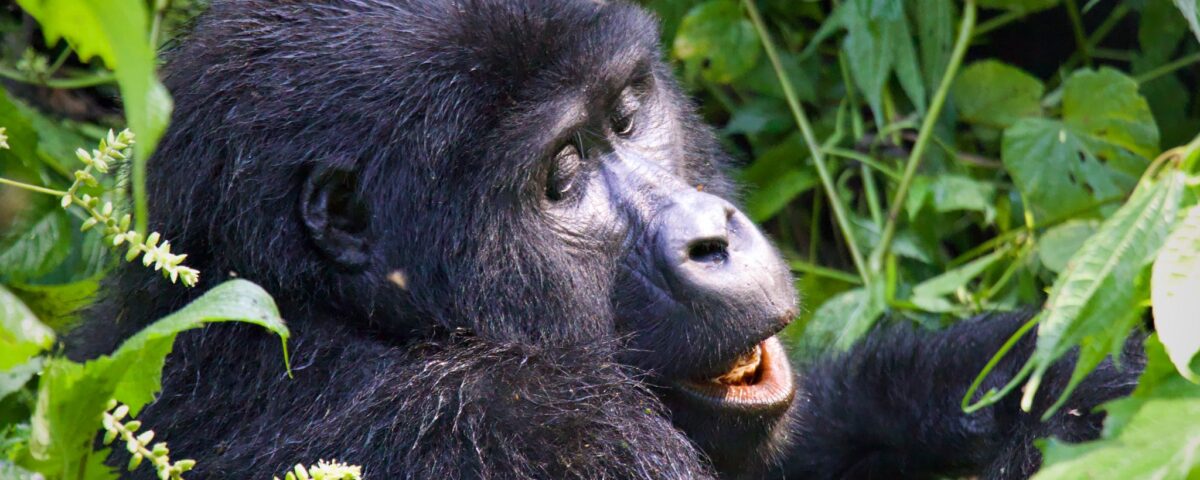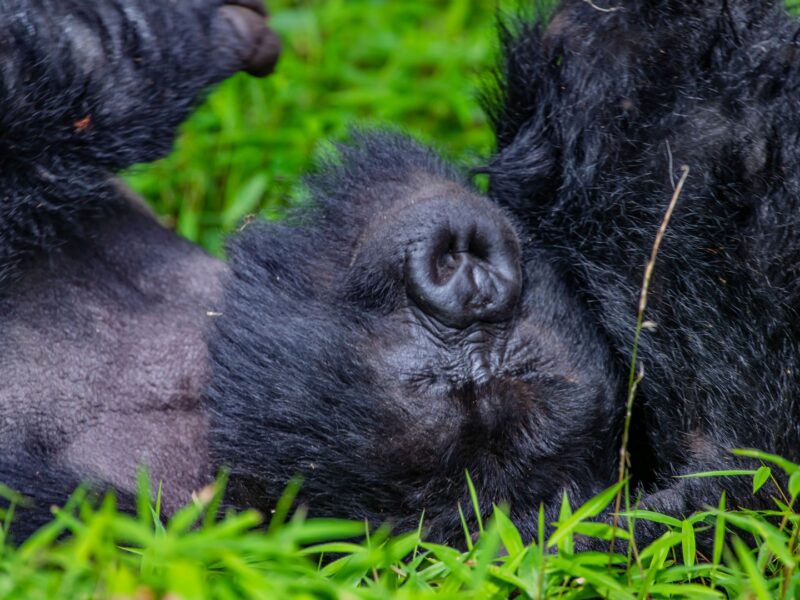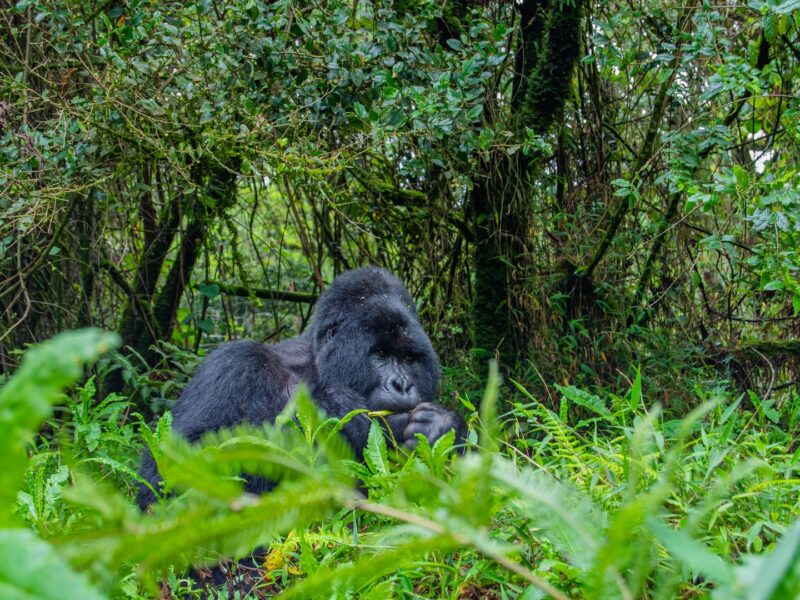
How Many Hours Are Spent on a Gorilla Trekking Safari?
July 23, 2025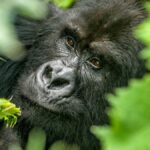
Gorilla Trekking Experience in Uganda’s Rainy Season
July 24, 2025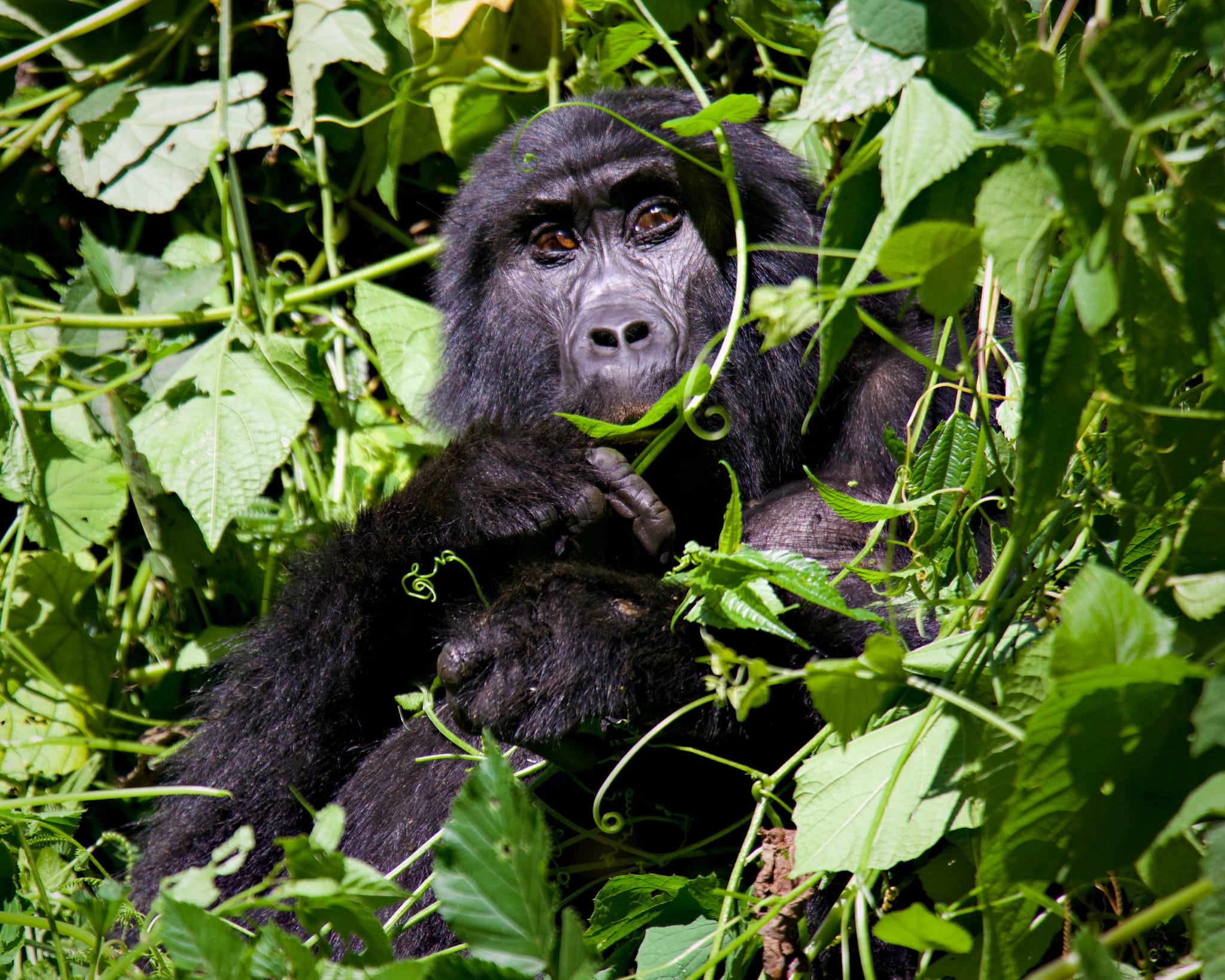
A Female Gorilla in Bwindi Impenetrable Forest
Why Flash Photography is Prohibited During Gorilla Trekking
Travels often wonder why Flash Photography is Prohibited During Gorilla Trekking, Visitors are prohibited not to use flash photography during these treks and this rule is non-negotiable.
It’s not minor inconvenience, the impact of flash photography on gorillas is significant and potentially dangerous.
The reason behind this guideline not only enhances your awareness but contributes to the safety, sustainability, and conservation of Uganda gorilla tours.
Venturing into the mountains and rainforests of Bwindi Impenetrable Forest for a gorilla trekking safari is the most breathtaking wildlife experiences.
These gentle giants, who share over 98% of our DNA, reside deep within the dense jungles of Bwindi Impenetrable National Park and Mgahinga Gorilla National Park.
It’s natural to capture every detail: the expressive eyes of a silverback, a curious baby climbing on its mother, the tranquil jungle atmosphere.
Why Is Flash Photography a Problem During Gorilla Encounters?
Entering gorilla habitat, you’re stepping into a highly sensitive ecosystem. Mountain gorillas are intelligent and emotionally complex creatures.
A sudden burst of artificial light in the low-lit, tranquil forest environment can startle gorillas, causing stress or confusion.
Flash disrupts the natural behaviour of the animals when they are grooming, eating, playing, or nurturing their young.
Artificial light disturbs the Gorillas, and their reactions can range from discomfort to complete behavioural changes.
Exposure to such stimuli can lead to chronic stress, anxiety, or social disruptions within gorilla families.
Flash violates the trust between humans and these wild animals, often undoing the delicate progress made during the habituation process.
Respecting the Forest and Its Inhabitants
Trekking is not only observing animals from a distance, you’re walking through their world, breathing in the damp forest air, listening to the echoes of birds.
While witnessing one of the rarest wildlife experiences on the planet respect becomes the most important rule.
Flash photography clashes with the essence of this natural experience. That artificial element is introduced where silence and subtlety reign.
And that’s precisely what makes Uganda gorilla trekking so special and teaches you to slow down, observe, and truly connect.
The favourite part of gorilla trekking isn’t the photographs captured, but the raw and emotional connection when a young gorilla met their gaze.
Also, when a silverback passes by with quiet power. These are memories etched in the heart, not just the camera.
What Other Safari Experiences Can You Combine with Gorilla Trekking in Uganda?
Bwindi Impenetrable Forest has more to explore beyond the trek itself. Uganda is a country of astounding diversity—geographically and culturally.
visiting the Batwa community, offers a cultural counterpoint to the wildlife experience. The Batwa are the original forest dwellers of Bwindi.
cultural tours provide insights into their music, storytelling, herbal medicine, and traditional hunting skills.
Walking through the forest with a Batwa elder reveals a sacred, human side of the land where every plant has meaning.
Travellers can see our lively and intelligent primate cousins in chimpanzee trekking in Kibale Forest.
Queen Elizabeth National Park, a few hours’ drive from Bwindi, offer game drives where elephants, lions, and antelope roam freely.
The Kazinga Channel boat safari is another highlight, perfect for spotting hippos, crocodiles, and colourful birdlife.
Those seeking tranquillity will enjoy Lake Bunyonyi, known for its scenic islands and peaceful atmosphere, ideal for relaxation after trekking.
The Rwenzori Mountains, known as the “Mountains of the Moon,” or go golden monkey trekking in Mgahinga with rare, energetic primates.
Guidelines for Ethical and Responsible Gorilla Trekking
Ethical tourism is central to the success of Uganda gorilla tours, and several key practices help protect the animals.
In addition to avoiding flash photography, visitors must maintain a minimum distance of 7 meters (23 feet) from the gorillas, even if the animals approach.
This distance helps prevent stress and limits the transmission of human diseases.
Trekkers should keep their voices low and avoid sudden movements, Eating, drinking, and smoking.
Following the instructions of your guide is not optional it’s a matter of safety and conservation. Uganda’s rangers are highly trained and experienced, and they are committed to ensuring that every gorilla encounter is safe, educational, and respectful.
By adhering to these rules, you help sustain the delicate balance between tourism and conservation. Each trek becomes part of a global movement to protect one of Earth’s most iconic species.


